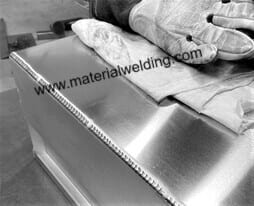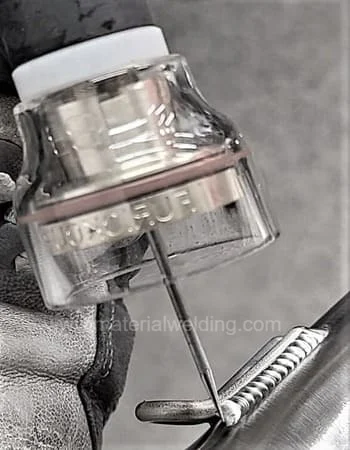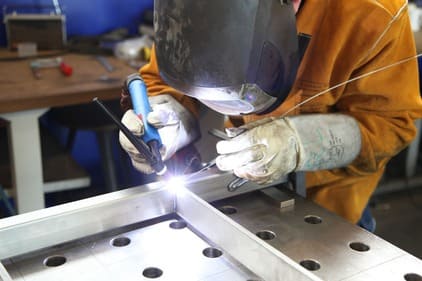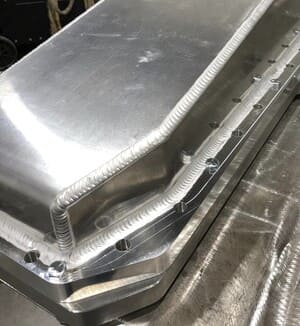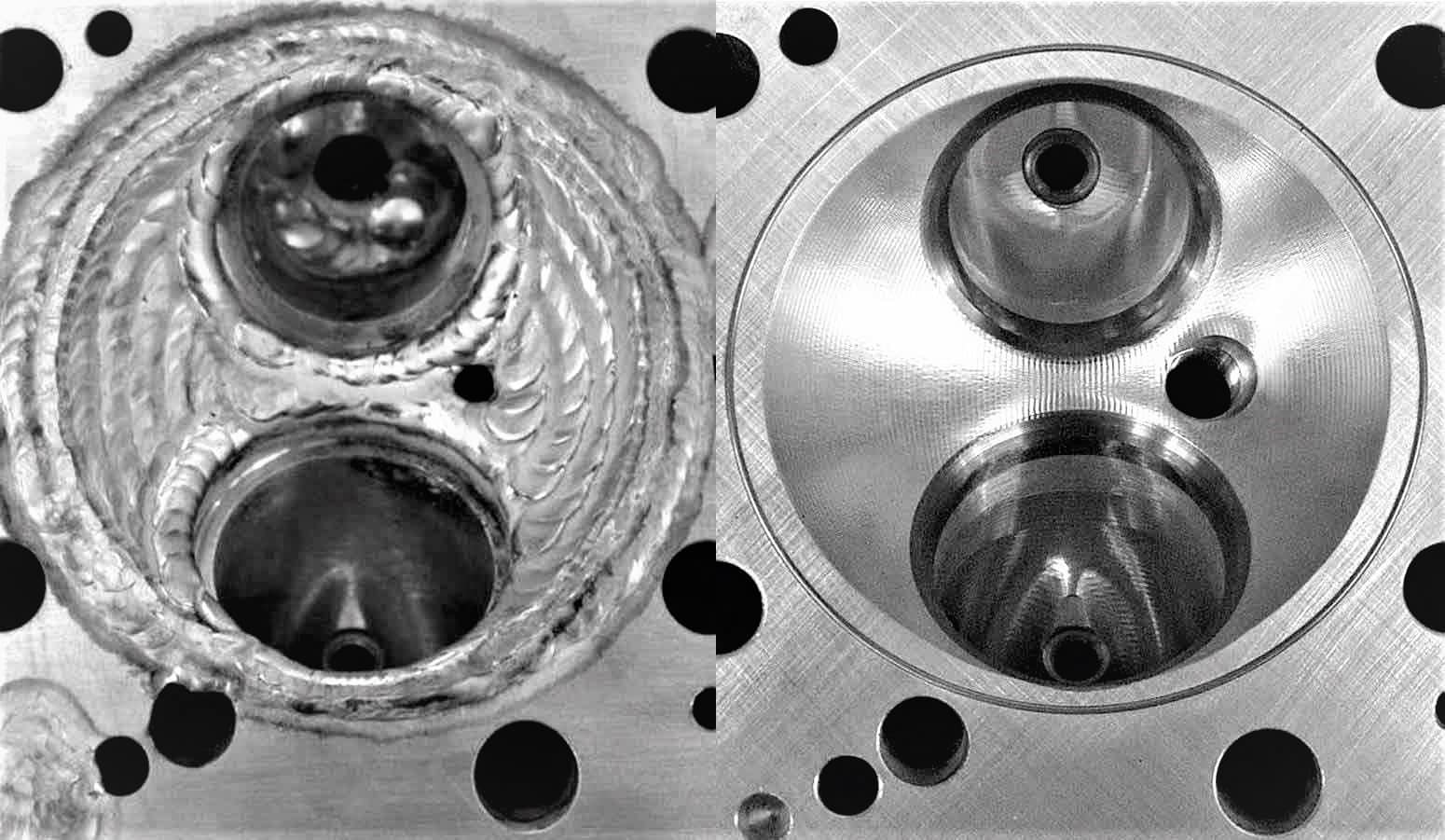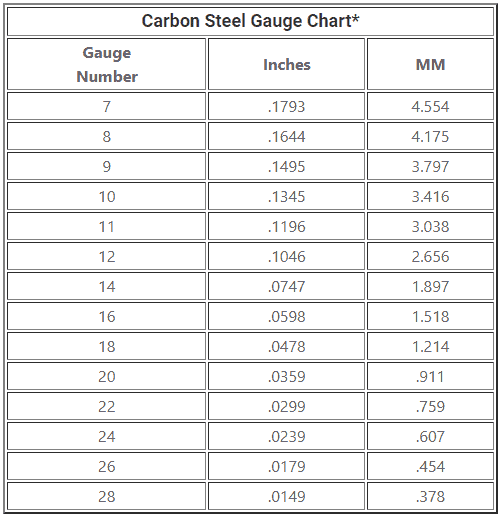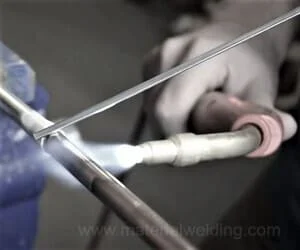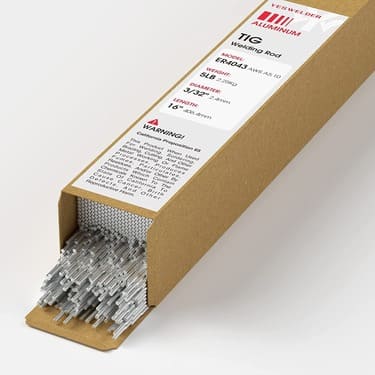Can Aluminum be MIG welded?
Yes, aluminum can be MIG welded. It is a popular choice for welding because it is easy to use and produces high-quality results. However, there are some things to keep in mind when welding aluminum. For starters, you need to use a shielding gas that is compatible with aluminum, such as argon or helium.
You should also use a higher voltage and wire feed speed when welding aluminum.
Aluminum MIG welding is especially good for welding Aluminum thickness of 14 gauges and higher. For Aluminum welding less than 14 gauges, TIG Welding is better option.
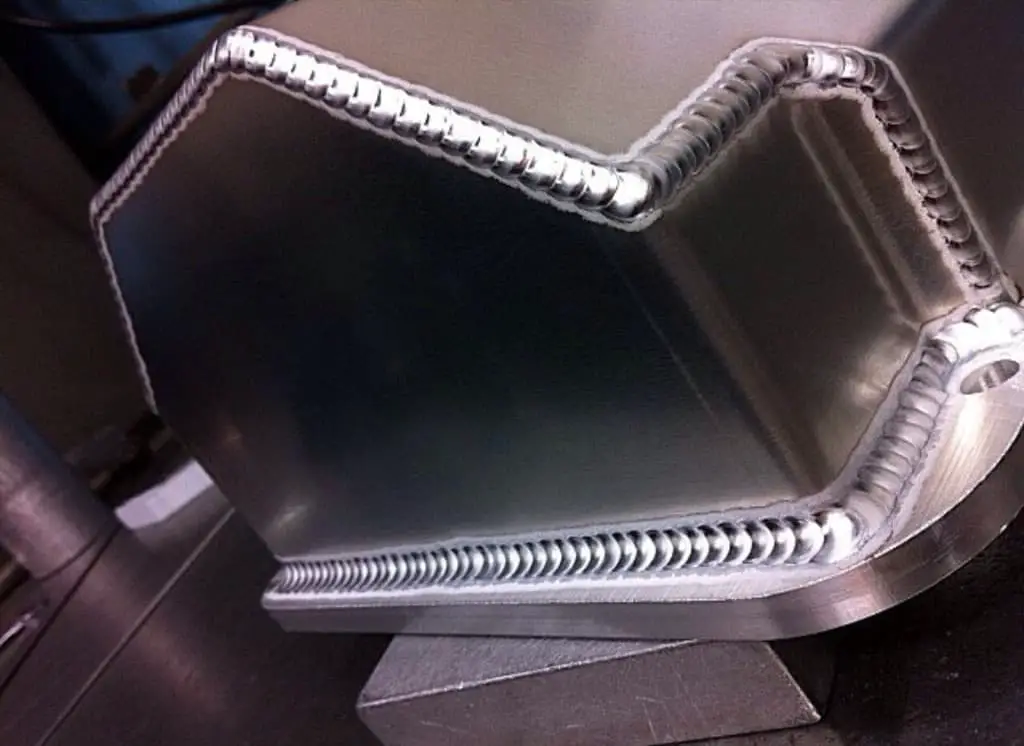
Before you start the welding, make sure that the aluminum is clean and free of any oils or contaminants. You also need to use a filler material that is compatible with aluminum.
In most cases, you will need to use a special aluminum filler material. Make sure that you practice on some scrap pieces of aluminum before attempting to weld anything together.
Download MIG Aluminum Welding Electrode Selection Chart via this link.
MIG aluminum welding wire rod
When welding aluminum, you will need to use a filler wire that is designed to work with the material.
There are many different types of aluminum welding wire available, and it can be difficult to decide which one to use. One of the most popular types is ER4043 wire.
This wire is made from a magnesium-aluminum alloy and is designed for MIG welding. It produces a strong weld with minimal spatter.
Another popular type of aluminum welding wire is ER5356. This wire is made from an alloy that contains copper, magnesium, and silicon.
It is also designed for MIG welding, and produces a very strong weld with low levels of spatter.
Aluminum MIG welding wire speed and voltage chart
There are many factors that affect the quality of the weld, including the speed and voltage at which you run the welding machine.
Different types of aluminum welding wire require different speeds and voltages for optimal results. A chart like this can help you find the right settings for your project.

Gasless MIG Aluminum Welding wire
To be honest with you, there is no Flux cored self shielded (Gasless MIG Wire) for Aluminum MIG welding. So, Gasless MIG Aluminum Welding wire does not exist.
There is no gasless MIG aluminum welding wire. We need shielding gas for Aluminum MIG Welding that protects the weld from atmospheric contamination, and without it, the weld would be susceptible to oxidation and other forms of degradation.
Shielding gas is mandatory for Aluminum welding which is a highly oxidizing metal.
Related Post: Welding Gasless MIG- TIG
If you see example of MIG Wire ER4043 or ER5356, both are solid wires. You may notice adverts on amazon or ebay.com about Gasless MIG Aluminum Welding wire, but in actual these are wrong description put by sellers.
MIG Aluminum Welding Machine
MIG aluminum welding machines are special machines. They use AC MIG or pulsed MIG to weld aluminum. The welding process is different from welding steel. The machines are more expensive than standard MIG machines.
Aluminum is a softer metal than steel. It can be welded with a lower voltage and amperage than steel.
This makes it possible to use a standard MIG machine to weld aluminum. However, the welds will not be as strong as those made with a dedicated aluminum MIG machine.
The AC MIG process uses alternating current to create the welding arc. This type of process is better for welding aluminum than the DC MIG process, which uses direct current.
The pulsed MIG process uses a pulsing current to create the arc. This gives you more control over the weld puddle and allows you to make smaller welds.
MIG Aluminum Welding Gas
MIG aluminum welding gas is a shielding gas used in the MIG welding process. The three most common types of MIG aluminum welding gas are:
- Argon,
- Helium, and an
- Argon-helium mixture.
The type of gas used depends on the thickness of the metal being welded. For thin metals, argon is typically used because it produces a stable arc and is less expensive than helium.
For thicker metals, helium is often used because it produces a hotter arc and results in less distortion.
An argon-helium mixture can be used for metals that are somewhere in between these two thicknesses.
The flow rate of the MIG aluminum welding gas depends on the type of gas being used and the thickness of the metal being welded.
MIG Aluminum Welding Polarity
Welders use direct current electrode positive (DCEP) or alternating current (AC) to weld aluminum.
The polarity used depends on the type of welders and the equipment they are using.
Some welders use DCEP for all aluminum welding, while others use pulsed DCEP for small aluminum welds and AC for larger welds.
Related Post: Types of polarity in SMAW, MIG, MAG, FCAW, TIG and SAW
MIG welding is a popular choice for welding aluminum because it is easy to learn and produces high-quality welds.
When MIG welding aluminum, the polarity should be set to DCEP. This setting creates a stable arc that produces minimal spatter and good penetration.
MIG Aluminum Welding Setting
When welding aluminum with a MIG welder, the wire diameter, wire feed rate, current and voltage all need to be set correctly in order to produce a quality weld.
The gas flow rate also needs to be set correctly in order to shield the weld from the atmosphere. If any of these settings are incorrect, it can cause the weld to be porous or contain defects.
Recommended MIG Aluminum Welding Setting for wire diameters, WFS, Amperage, welding voltage and gas flow rate are given in the below MIG Aluminum Welding Setting Chart.

Aluminum MIG Welding Black Soot
When welding aluminum with a MIG welder, you may sometimes see black soot coming from the weld. This is caused by insufficient gas shielding, which can be due to several factors:
1) Using a gas bottle that is too low in pressure.
2) Using the wrong gas for the job – for example, using argon instead of CO2 when welding aluminum.
3) Arc length being too long.
4) Contamination of the filler wire or contact tips with oils or other substances.
5) Welding at the wrong push angle.
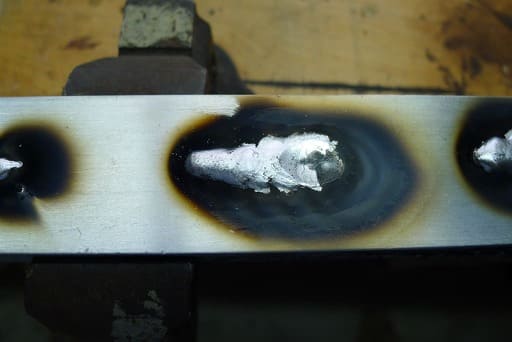
The aluminum in the weld joint interacts with the magnesium oxide in the electrode to produce the black residue.
Using a filler metal that is compatible with both aluminum and magnesium oxide will help to reduce or eliminate the black residue.
Is MIG welding aluminum difficult?
MIG welding is a process that is widely used in the welding industry. It is a process that can be used to weld many different types of metals.
In recent years, MIG welding has become increasingly popular for welding aluminum. Some people believe that MIG welding aluminum is difficult, but this is not always the case.
MIG welding aluminum does require some adjustments to the welder settings, but it is not significantly more difficult than MIG welding other types of metals.
One thing that you will need to do when MIG welding aluminum is use a higher voltage and wire feed speed than you would use for other metals.
You will also need to use a shielding gas that is specifically designed for aluminum welds.
There are many different types of shielding gases available, so it is important to choose one that is specifically designed for aluminum welds.
Best welder for aluminum MIG Welding
When it comes to welding aluminum, there are a few things you need to take into account.
The type of welder you use is one of the most important factors, as not all welders are created equal when it comes to welding aluminum.
First and foremost, you need a welder that is capable of producing a consistent arc. This ensures that your welds are strong and reliable.
Second, the welder should have a high duty cycle so that you can weld for longer periods of time without having to stop to cool down.
Finally, it’s important to choose a welder that is specifically designed for welding aluminum, as this will ensure that you get the best results possible.
The Millermatic 211 is one of the best welders for welding aluminum MIG.
Similar Posts:
